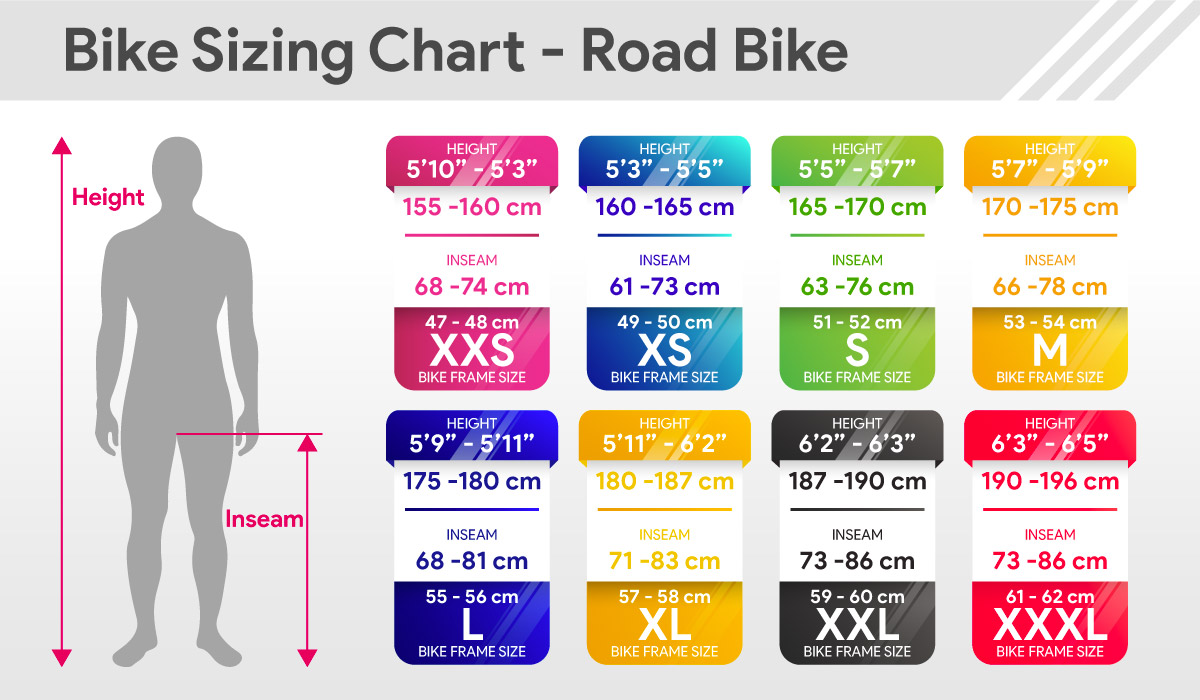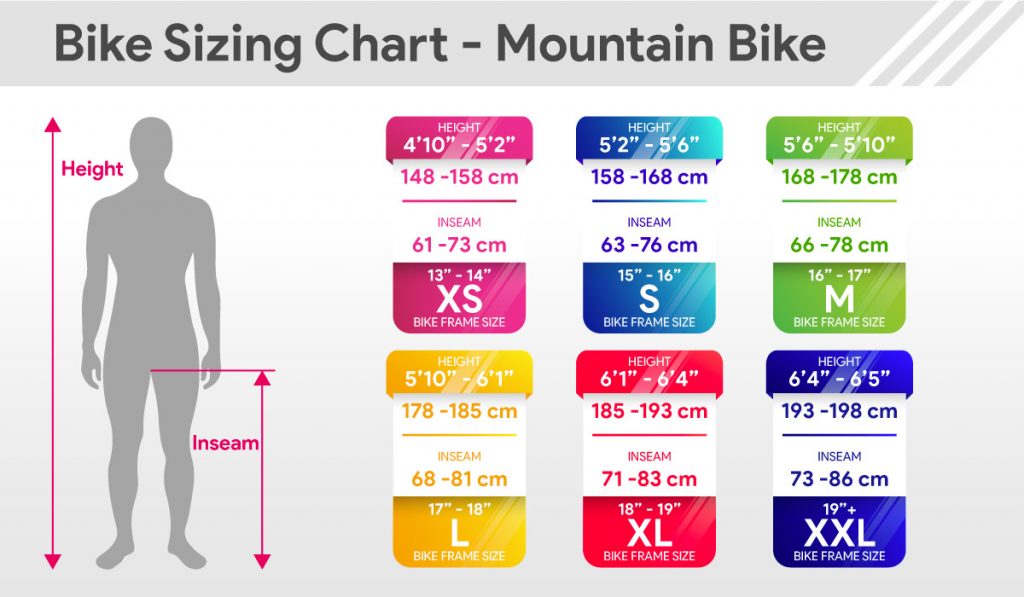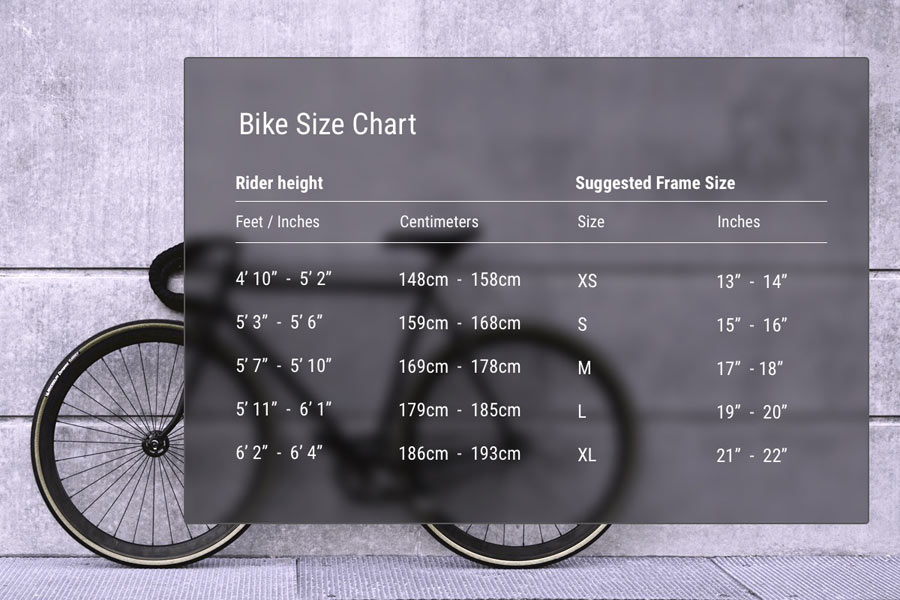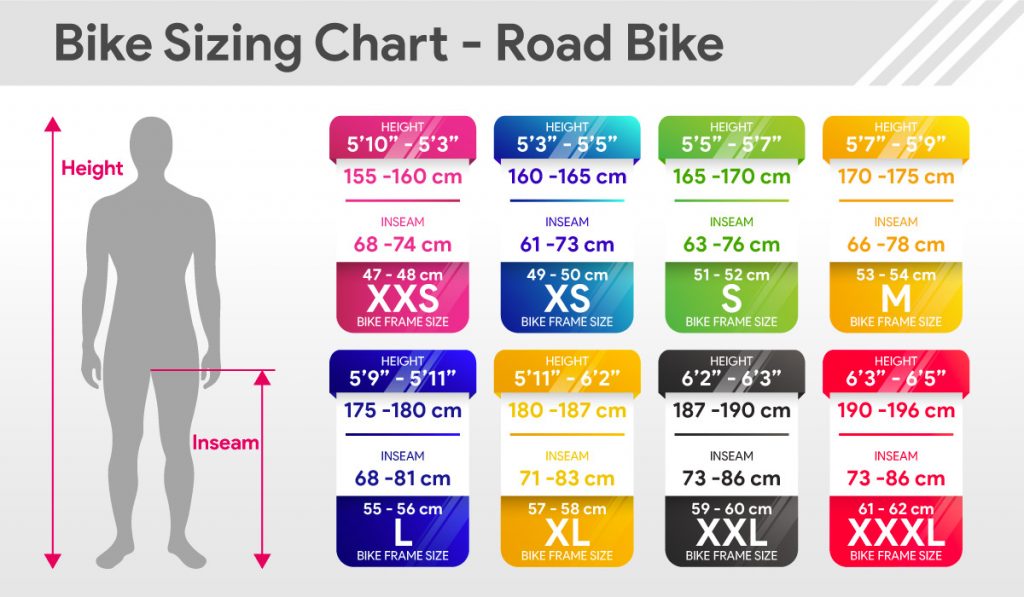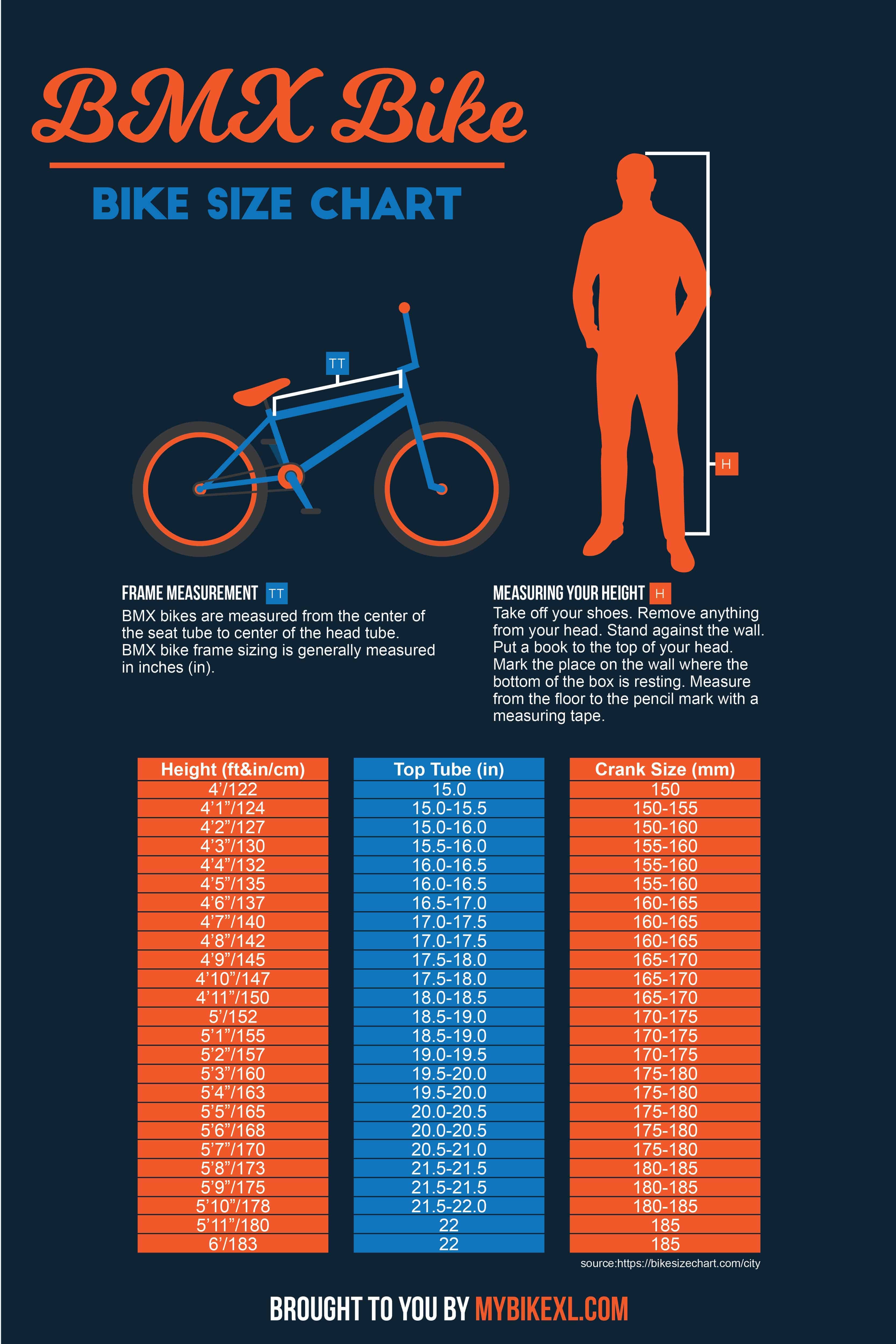Why Bike Size Matters: Avoiding Discomfort and Injury
Choosing the right bike size is crucial for a comfortable and enjoyable riding experience. A poorly fitting bike can lead to discomfort, injury, and decreased performance. When a bike is too small or too large, it can put strain on the body, particularly the back, neck, and knees. This can result in a range of issues, from minor aches and pains to more serious injuries, such as tendonitis or nerve damage.
In addition to the physical risks, a bike that is the wrong size can also affect performance. A bike that is too small may not provide enough power or efficiency, while a bike that is too large can be difficult to handle and maneuver. This can be frustrating for riders, especially those who are new to cycling or looking to improve their skills.
So, what size bike should you get? The answer depends on a variety of factors, including your height, inseam, and riding style. In the next section, we will provide a step-by-step guide on how to measure your body to determine the ideal bike size.
It’s worth noting that bike size is not just about comfort and performance; it’s also about safety. A bike that is the wrong size can increase the risk of accidents, particularly if the rider is unable to control the bike properly. By choosing the right bike size, riders can reduce their risk of injury and enjoy a safer, more enjoyable riding experience.
Whether you’re a seasoned cyclist or just starting out, choosing the right bike size is essential for getting the most out of your ride. By considering your body measurements, riding style, and the type of bike you’re looking for, you can find a bike that fits perfectly and provides a comfortable, enjoyable riding experience.
How to Measure Your Body for a Bike: A Step-by-Step Guide
To determine the ideal bike size, it’s essential to take accurate body measurements. This will help you find a bike that fits comfortably and provides optimal performance. Here’s a step-by-step guide on how to measure your body for a bike:
1. Inseam Measurement: Stand against a wall with your feet shoulder-width apart. Place a book or a ruler between your legs, with the spine or edge against the wall. Measure the distance from the floor to the top of the book or ruler. This is your inseam measurement.
2. Arm Length Measurement: Hold your arm straight out to the side, with your palm facing down. Measure the distance from the center of your back to the tip of your middle finger. This is your arm length measurement.
3. Torso Length Measurement: Measure the distance from the base of your neck to your waistline. This is your torso length measurement.
Once you have taken these measurements, you can use them to determine your ideal bike size. Most bike manufacturers provide size charts that correspond to specific body measurements. By comparing your measurements to the size chart, you can find a bike that fits comfortably and provides optimal performance.
When choosing a bike size, it’s also essential to consider your riding style. If you’re a casual rider, you may prefer a more upright riding position, which requires a slightly larger bike size. On the other hand, if you’re a competitive rider, you may prefer a more aggressive riding position, which requires a slightly smaller bike size.
By taking accurate body measurements and considering your riding style, you can find a bike that fits perfectly and provides a comfortable, enjoyable riding experience. Remember, the right bike size is crucial for avoiding discomfort, injury, and decreased performance. So, take the time to get it right, and you’ll be rewarded with a better riding experience.
Understanding Bike Size Charts: A Breakdown of the Numbers
Bike size charts can be overwhelming, especially for those new to cycling. With so many different types of bikes and sizing systems, it’s easy to get confused. However, understanding bike size charts is crucial for finding the right size bike. In this section, we’ll break down the different types of bike size charts and explain how to use them to find the perfect fit.
There are several types of bike size charts, including:
- Road Bike Size Charts: Road bike size charts typically use a combination of height and inseam measurements to determine the ideal bike size.
- Mountain Bike Size Charts: Mountain bike size charts often use a combination of height, inseam, and arm length measurements to determine the ideal bike size.
- Hybrid Bike Size Charts: Hybrid bike size charts typically use a combination of height and inseam measurements to determine the ideal bike size.
When using a bike size chart, it’s essential to consider the following factors:
- Height: Your height is a critical factor in determining the ideal bike size. Make sure to use a size chart that corresponds to your height range.
- Inseam: Your inseam measurement is also crucial for determining the ideal bike size. Make sure to use a size chart that corresponds to your inseam measurement.
- Arm Length: Your arm length measurement is important for determining the ideal bike size, especially for mountain bikes.
Once you’ve found a size chart that corresponds to your measurements, use the following steps to find the perfect fit:
- Locate your height and inseam measurements on the size chart.
- Find the corresponding bike size based on your measurements.
- Consider your riding style and preferences when choosing a bike size.
By understanding bike size charts and using the steps outlined above, you can find the perfect fit and enjoy a comfortable, enjoyable riding experience. Remember, the right bike size is crucial for avoiding discomfort, injury, and decreased performance. So, take the time to get it right, and you’ll be rewarded with a better riding experience.
The Role of Bike Type: How Different Styles Affect Sizing
When it comes to choosing the right bike size, the type of bike you’re looking for plays a significant role. Different bike styles have unique sizing requirements, and understanding these differences is crucial for finding the perfect fit. In this section, we’ll explore how different bike types affect sizing and provide guidance on how to factor this into your decision.
Road Bikes: Road bikes are designed for speed and efficiency, and as such, they typically have a more aggressive riding position. This means that road bikes tend to have a slightly smaller frame size compared to other bike types. When choosing a road bike, look for a frame size that corresponds to your height and inseam measurements.
Mountain Bikes: Mountain bikes are designed for off-road riding and typically have a more upright riding position. This means that mountain bikes tend to have a slightly larger frame size compared to road bikes. When choosing a mountain bike, consider your arm length and torso length measurements in addition to your height and inseam.
Hybrid Bikes: Hybrid bikes are designed for commuting and recreational riding, and as such, they typically have a more relaxed riding position. This means that hybrid bikes tend to have a slightly larger frame size compared to road bikes. When choosing a hybrid bike, consider your height and inseam measurements, as well as your riding style and preferences.
Electric Bikes: Electric bikes are designed for comfort and convenience, and as such, they typically have a more upright riding position. This means that electric bikes tend to have a slightly larger frame size compared to road bikes. When choosing an electric bike, consider your height and inseam measurements, as well as your riding style and preferences.
When choosing a bike size, it’s essential to consider the type of bike you’re looking for and how it will affect the sizing. By understanding the unique sizing requirements of different bike types, you can find a bike that fits perfectly and provides a comfortable, enjoyable riding experience. Remember, the right bike size is crucial for avoiding discomfort, injury, and decreased performance. So, take the time to get it right, and you’ll be rewarded with a better riding experience.
Real-World Examples: How to Choose the Right Size for Popular Bike Models
Now that we’ve discussed the importance of choosing the right bike size and how to measure your body, let’s take a look at some real-world examples of popular bike models. We’ll explore how to choose the right size for these bikes, including specific size charts and recommendations.
Trek Bikes: Trek is a well-known brand in the cycling world, and their bikes are popular among riders of all levels. When choosing a Trek bike, consider the following size chart:
| Height | Frame Size |
|---|---|
| 5’2″-5’6″ | 13-15 inches |
| 5’7″-5’11” | 17-19 inches |
| 6’0″-6’4″ | 21-23 inches |
For example, if you’re 5’9″ with an inseam of 30 inches, you would likely fit a Trek bike with a frame size of 18-20 inches.
Specialized Bikes: Specialized is another popular brand in the cycling world, and their bikes are known for their high-quality components and comfortable ride. When choosing a Specialized bike, consider the following size chart:
| Height | Frame Size |
|---|---|
| 5’2″-5’6″ | 14-16 inches |
| 5’7″-5’11” | 18-20 inches |
| 6’0″-6’4″ | 22-24 inches |
For example, if you’re 5’10” with an inseam of 32 inches, you would likely fit a Specialized bike with a frame size of 20-22 inches.
Giant Bikes: Giant is a well-known brand in the cycling world, and their bikes are popular among riders of all levels. When choosing a Giant bike, consider the following size chart:
| Height | Frame Size |
|---|---|
| 5’2″-5’6″ | 15-17 inches |
| 5’7″-5’11” | 19-21 inches |
| 6’0″-6’4″ | 23-25 inches |
For example, if you’re 5’11” with an inseam of 34 inches, you would likely fit a Giant bike with a frame size of 22-24 inches.
By considering these size charts and recommendations, you can find the perfect fit for your next bike. Remember to always test ride a bike before purchasing to ensure a comfortable and enjoyable ride.
Test Ride Before You Buy: The Importance of a Trial Run
Once you’ve narrowed down your options and found a bike that seems like the perfect fit, it’s essential to take it for a test ride. A test ride is the best way to ensure that the bike is comfortable, handles well, and meets your specific needs. In this section, we’ll discuss the importance of test riding a bike before purchasing and provide tips on how to evaluate the fit and feel of the bike during a test ride.
A test ride is crucial for several reasons:
- Comfort: A test ride allows you to assess the comfort of the bike, including the seat height, handlebar height, and overall fit.
- Handling: A test ride gives you the opportunity to evaluate the bike’s handling, including its stability, responsiveness, and maneuverability.
- Performance: A test ride allows you to assess the bike’s performance, including its acceleration, braking, and overall speed.
When test riding a bike, pay attention to the following factors:
- Seat height: Make sure the seat height is comfortable and allows you to put both feet flat on the ground.
- Handlebar height: Ensure the handlebar height is comfortable and allows you to maintain a relaxed riding position.
- Reach: Check that the reach is comfortable and allows you to maintain a relaxed riding position.
- Handling: Evaluate the bike’s handling, including its stability, responsiveness, and maneuverability.
By taking a bike for a test ride, you can ensure that it’s the perfect fit for you and meets your specific needs. Remember, a test ride is an essential part of the bike-buying process, and it’s crucial to take the time to evaluate the fit and feel of the bike before making a purchase.
Common Mistakes to Avoid: Don’t Make These Sizing Errors
When choosing a bike size, it’s easy to make mistakes that can lead to discomfort, injury, and decreased performance. In this section, we’ll highlight common mistakes to avoid when choosing a bike size, including relying too heavily on size charts, neglecting to consider riding style, and ignoring comfort and fit.
Relying Too Heavily on Size Charts: While size charts can be a useful guide, they shouldn’t be the only factor in determining your bike size. Every person’s body is different, and size charts may not take into account your unique proportions. Make sure to consider your riding style, comfort, and fit when choosing a bike size.
Neglecting to Consider Riding Style: Your riding style can greatly impact the size of bike you need. For example, if you’re a casual rider, you may prefer a more upright riding position, which requires a slightly larger bike size. On the other hand, if you’re a competitive rider, you may prefer a more aggressive riding position, which requires a slightly smaller bike size.
Ignoring Comfort and Fit: Comfort and fit are crucial when choosing a bike size. Make sure to consider the seat height, handlebar height, and overall fit of the bike. If the bike doesn’t feel comfortable, it’s not the right size for you.
Other common mistakes to avoid when choosing a bike size include:
- Not considering the type of bike: Different types of bikes (e.g. road bike, mountain bike, hybrid bike) have unique sizing requirements. Make sure to consider the type of bike you’re looking for when choosing a size.
- Not taking into account your inseam: Your inseam is a critical factor in determining your bike size. Make sure to take into account your inseam when choosing a size.
- Not considering your arm length: Your arm length can impact the size of bike you need. Make sure to consider your arm length when choosing a size.
By avoiding these common mistakes, you can ensure that you choose the right bike size for your needs. Remember, the right bike size is crucial for comfort, performance, and safety.
Getting a Professional Fit: When to Seek Expert Advice
While choosing the right bike size can be a daunting task, seeking professional advice from a bike fitter or experienced salesperson can make all the difference. In this section, we’ll discuss the benefits of seeking professional advice and how they can help you find the perfect fit.
A professional bike fitter or experienced salesperson can help you find the perfect fit by taking into account your unique body proportions, riding style, and preferences. They can also help you avoid common sizing mistakes and ensure that your bike is properly adjusted to fit your body.
Some benefits of seeking professional advice include:
- Customized fit: A professional bike fitter or experienced salesperson can provide a customized fit that takes into account your unique body proportions and riding style.
- Increased comfort: A properly fitted bike can increase comfort and reduce the risk of injury or discomfort.
- Improved performance: A properly fitted bike can also improve performance by allowing you to maintain a more efficient riding position.
When to seek expert advice:
- If you’re new to cycling: If you’re new to cycling, seeking professional advice can help you find the perfect fit and ensure that you’re comfortable and safe on your bike.
- If you’re experiencing discomfort or pain: If you’re experiencing discomfort or pain while riding, seeking professional advice can help you identify the problem and find a solution.
- If you’re looking for a high-performance bike: If you’re looking for a high-performance bike, seeking professional advice can help you find the perfect fit and ensure that you’re getting the most out of your bike.
By seeking professional advice, you can ensure that you find the perfect fit and get the most out of your bike. Remember, a properly fitted bike is essential for comfort, performance, and safety.




